PRISONERS
SYSTEM OF TERROR
How Ukrainian Civilians Disappear in Russian Captivity
1. When a City Loses Its Voice
In the spring of 2022, as Russian forces occupied cities in Southern and Eastern Ukraine, many still believed it was possible to stop the war without violence. In Kherson, Melitopol, Berdiansk, and Enerhodar, unarmed civilians took to the streets. They raised Ukrainian flags, sang the national anthem, and looked directly into the eyes of heavily armed occupiers. The world watched as people stood in front of armored vehicles with nothing but their bodies—a desperate, peaceful act of defiance. These moments shattered the core narrative of Russian propaganda: that Ukraine was supposedly waiting to welcome Russia with open arms.
But the protests soon faded. The streets emptied, fear settled in the air, and Russian symbols appeared on government posters and billboards. Silence replaced songs. Those who had dared to protest began to vanish—without a trace.
We at the Activatica Project first heard about these disappearances in the earliest weeks of the war. Refugees spoke of loved ones who were stopped at checkpoints, or taken from their houses and never returned. At first, it seemed like isolated tragedies. But the more testimonies we collected, the clearer the pattern became: these were not exceptions. This was the rule.
By 2023, it became impossible to ignore the truth. Behind the disappearances lies a unified, deliberate System. And where there is a system—there is always a scheme.
2. They Come at Dawn
It can happen any time of day. But most often, they come at dawn: a knock at the door, the lock smashed, and masked men flooding inside. Videos from these so-called “inspection raids” sometimes appear later on Russian state television. There, you’ll be labeled a “terrorist” or “extremist,” paraded in handcuffs through prison corridors for the cameras.
There are many pretexts for detaining civilians in occupied Ukraine. Often, it begins with prepared lists—compiled by the FSB. These lists include former military personnel, volunteers, journalists, teachers—anyone associated with Ukrainian civic identity. You could be targeted simply for taking part in a rally years ago, or for donating to the Ukrainian army. All activists, journalists, human rights defenders, civil servants, or even prominent local entrepreneurs who once played key roles in their community are now suspect.
Take the Plachkov family from Melitopol: a kind, well-known couple who owned a small café famous for its affordable, delicious food. Before the war, nearly everyone in Melitopol knew their Name. After the occupation, both husband and wife disappeared. Their story was featured in the first part of our “PRISONERS” project.
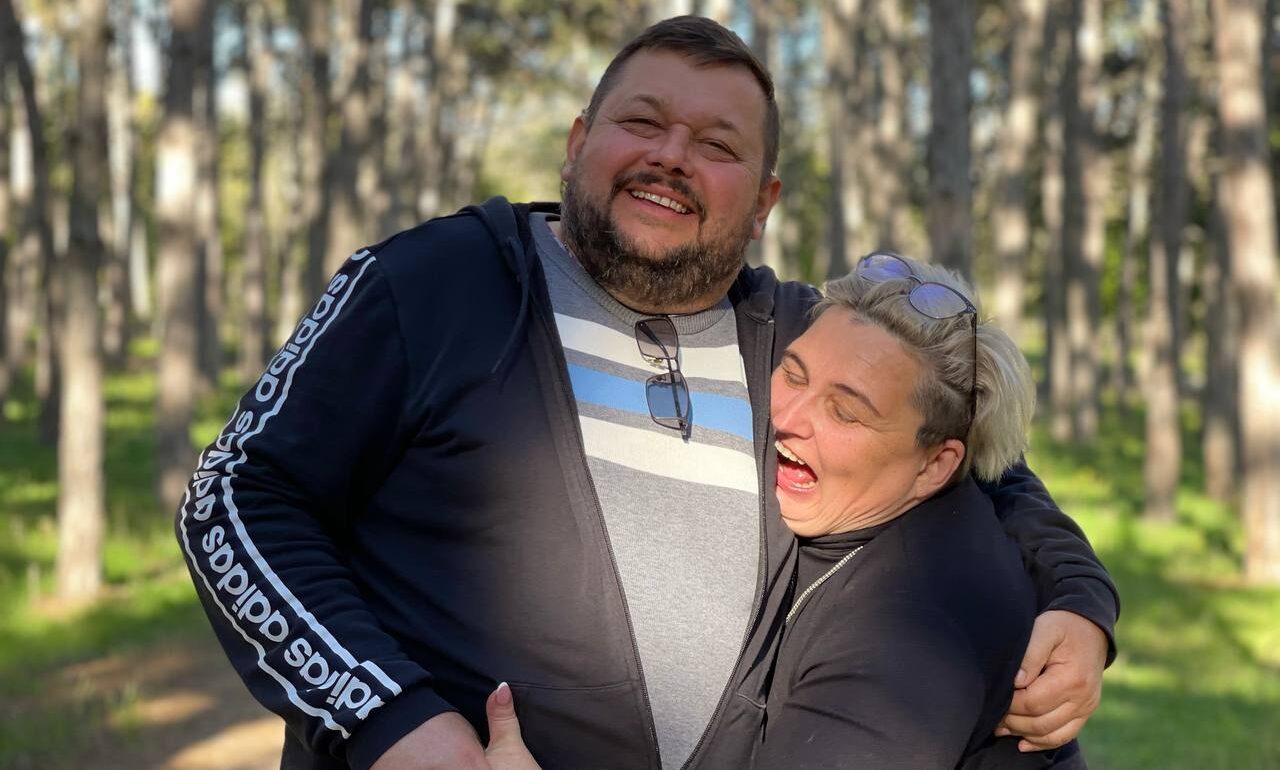
Arrests also happen during so-called “filtration” procedures—at checkpoints, when civilians try to evacuate or travel between cities. Phones and personal belongings are searched for anything remotely connected to Ukraine: a flag, a symbol, a photo in traditional clothing, a tattoo, a message thread.
And then there is sheer arbitrariness. Countless people have disappeared without any clear reason. A person simply walks outside—and is never heard from again. In occupied areas, any Russian officer—soldier, FSB agent, National Guard member—can detain a civilian. But most often, it’s the “men in black”: masked figures in unmarked black uniforms, faceless and nameless. This image recurs in the accounts of survivors and witnesses.
In our first documentary “PRISONERS: Fates,” we tell the stories of three families whose loved ones were taken:
- Tatyana Omelyanenko from Berdiansk has not seen her son, Damian, since November 2022. He was arrested and charged with “terrorism,” and is now being tried by a military court in Rostov-on-Don.
- Maria Kozlova’s husband, Andrei, was detained at a checkpoint in April 2022 while the family was trying to evacuate from occupied Kherson to Crimea with their young children. He has since been charged with “espionage.” During interrogations, he attempted to take his own life. In November 2023, Andrei was sentenced to 11 years in a high-security prison.
- Lyudmila Plachkova’s parents, Tatyana and Oleg, were taken from their home in Melitopol in the middle of the night in September 2022. Months later, Lyudmila found her mother in critical condition in a hospital, delivered there by FSB officers. Her mother died days later. Lyudmila still knows nothing about her father’s fate. He vanished deep within the machinery of the System.
How Many Have Vanished? No One Truly Knows
The exact number of Ukrainian civilians abducted by Russian forces remains unknown. What is certain is that only a small fraction ever reappear in Russian courts—typically during heavily choreographed, Stalin-style show trials. The Russian side routinely denies any involvement in abductions, which means no official lists of civilian prisoners exist.
Ukrainian human rights groups cite widely varying figures, ranging from 7,000 to 30,000 civilians forcibly disappeared. Each organization keeps its own records, and while many overlap, none are comprehensive. Even those numbers may be only the beginning. In one civilian support group, volunteers independently tallied a staggering estimate: as many as 70,000 Ukrainian civilians may have been abducted by Russian forces since the invasion began.
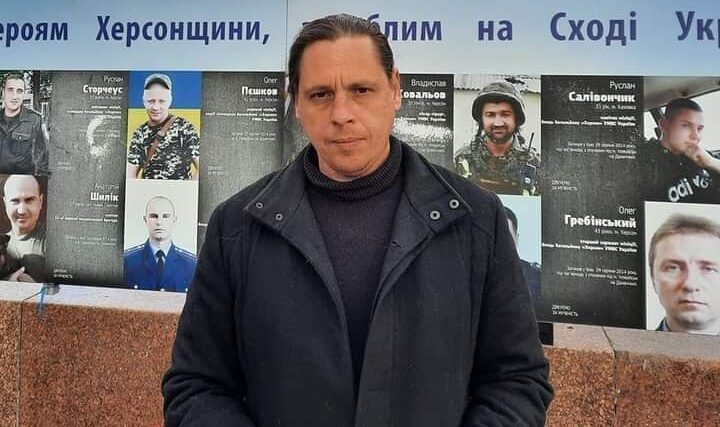
3. The "Special Screening" – A Test of Human Limits
After the abduction comes a stage euphemistically called the “special screening.” There is no mention of such a procedure in Russia’s Criminal Code, but in occupied territories, it is a deeply entrenched reality. In practice, “special screening” means torture—carried out to extract information, force confessions, or simply to degrade and humiliate the detainee.
These sessions often take place in basements, in administrative buildings seized by Russian troops, or in actual detention centers and prisons—any location convenient for the occupying forces. During the early days and weeks of the occupation, the first two types of locations were particularly common, as mass arrests and “cleansing” operations swept through newly captured cities.
The outcome of a “special screening” determines a detainee’s future status: they become either an “official” prisoner or an incommunicado detainee—someone held in complete isolation, without legal recognition or contact with the outside world.
“Official” prisoners are charged with crimes like terrorism, extremism, espionage, or treason. People who never knew each other before may suddenly find themselves lumped into fabricated “terrorist cells” in the eyes of the state.
If torture fails to yield enough material for a formal indictment—or if the System has no immediate need for a new criminal case—the detainee becomes incommunicado. These are the true disappeared, swallowed by the System without a trace.
Ukrainian journalist and activist Oleksandr Tarasov recalled being held in the former administrative offices of Kherson. He was beaten from 4 p.m. to 6 a.m., strung up by his arms, had his fingers crushed in handcuffs, and was electrocuted through his earlobes. Afterward, his captors gave him a choice: “Either you record a confession video, or we bring in your family—and do the same to them.”
These filmed confessions are a key pillar of Russian propaganda. They go viral across pro-Kremlin blogs and media outlets, framed as proof of “Ukrainian Nazis” and foreign plots. Under extreme duress, many detainees admit on camera to organizing anti-Russian rallies or name supposed accomplices—sometimes telling random names just to stop the pain. In some cases, the abuse extends to psychological torture: captors call the prisoner’s family and demand they record similar confessions on video, threatening never to release their loved one otherwise.
Damian Omelyanenko, investigative film
One such case is that of Tatyana Omelyanenko from Berdyansk. She managed to escape occupied territory, but her son Damian was arrested by the FSB. He was tortured and filmed confessing to fabricated “crimes against Russia.” An FSB agent then called Tatyana—who was in exile—and demanded she also record a confession, or she would never see her son again. She complied. Yet Damian remains imprisoned to this day. His case was formalized and he became another “official” prisoner of the System.
Tarasov also described witnessing the torture of others. At the detention center where he was held, the abuse began every evening when new prisoners were brought in, and lasted through the night. He recalled that after just five days, one inmate ended his life. Deprived of any tools, he fashioned a noose from his own clothing.
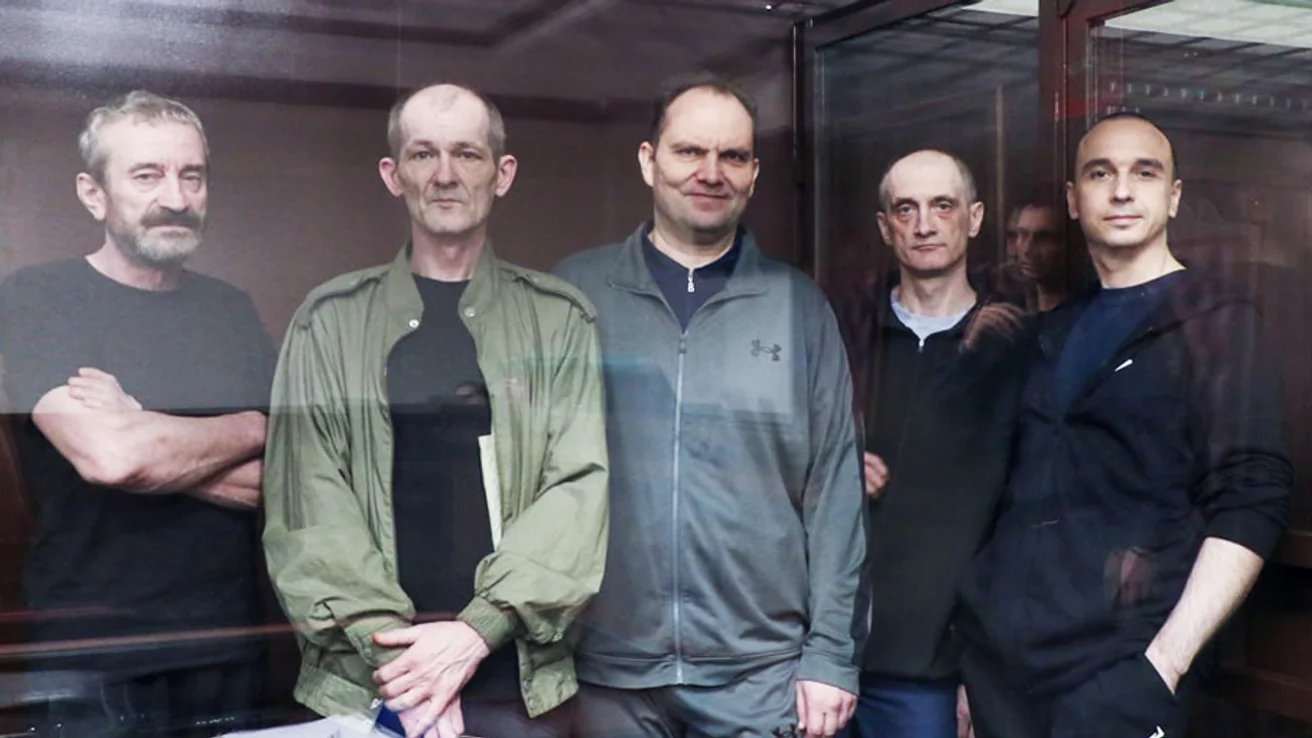
4. Trial Without Law: The "Official" Prisoners
The fate of Ukraine’s “official” civilian prisoners bears some resemblance to that of Russians charged under political articles—yet their conditions are typically far harsher. These prisoners are often held in isolation from the general inmate population and continue to be tortured, primarily to prevent them from retracting their coerced confessions. Many follow a now-familiar route through the penal system: from the city of abduction to the Simferopol detention center (SIZO), then to Taganrog SIZO, followed by Moscow’s infamous Lefortovo prison, and finally to a SIZO in the city where their trial is scheduled.
Military courts that process these cases are located in:
- Rostov-on-Don
(Russia, Rostov region), - Simferopol
(occupied Crimea), - Melitopol
(occupied Zaporizhzhia region of Ukraine), - Luhansk
(occupied Luhansk region of Ukraine), - Donetsk
(occupied Donetsk region of Ukraine), - Henichesk
(occupied Kherson region of Ukraine).
Charges are often repetitive and sweeping: “terrorism,” “espionage,” “high treason”. The entire process hinges on confessions extracted under torture. Witnesses are almost exclusively FSB officers. Lawyers are a formality: state-appointed attorneys support the prosecution, while independent defenders hired by families are denied access, intimidated, or removed from the case.
Ironically, these individuals may be considered “fortunate”: their legal status allows for rare contact with families or lawyers. Sometimes they are even listed as prisoners of war and become eligible for exchanges. In return, however, they are used by Russia’s propaganda machine: filmed and shown on national television as alleged members of “terrorist movements” operating in the occupied territories — used to justify the so-called “Special Military Operation.”
A resident of Melitopol, Andriy Holubiev, was charged as part of the so-called “Melitopol Five” — allegedly a terrorist group formed to resist the Special Military Operation. According to the prosecution, they planned “an act of international terrorism to disturb the peaceful coexistence of nations.”
All five men were tortured. One of them attempted suicide by slashing his wrists with a tin can lid, but the attempt failed.
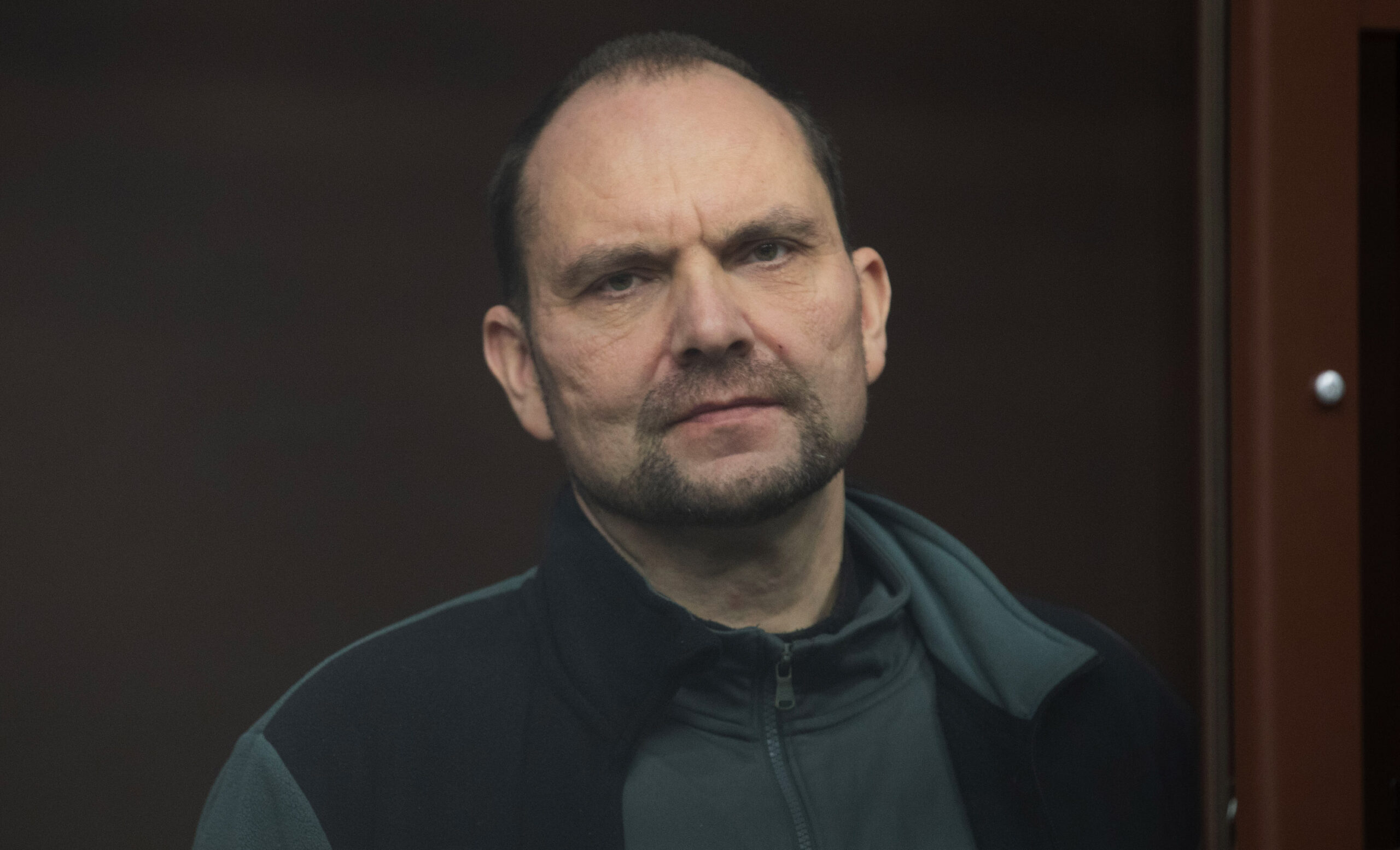
Andriy’s wife, Olha Holubieva, reported that the only “evidence” presented in court was a confession video made under extreme pressure. The family had no contact with him, and his chosen lawyer was never allowed to see him. In 2025, the so-called “Melitopol Five” were sentenced to prison terms ranging from 11 to 14 years.
These “official” prisoners serve their time in ordinary Russian penal colonies and prisons, side by side with Russian inmates. Formally, they are granted the same rights as Russian citizens: the ability to correspond, meet with lawyers, read newspapers, and watch the news. It is from this group of prisoners that most prisoner-exchange lists are compiled—though, in practice, military personnel are always prioritized.
As of June 2025—more than three years into the full-scale war—only 6,099 people have been exchanged. Of those, just about 300 were civilians. Considering the lowest estimated number of abducted civilians is 7,000, each noncombatant caught in the System may wait years, even decades, for their turn.
5. Behind the Wall of Silence: The “Incommunicado” Prisoners
The “incommunicado” prisoners make up the overwhelming majority of all civilian Ukrainians held in captivity. Like the “official” prisoners, they go through a so-called “special screening,” but no criminal charges are filed against them, meaning they never receive even a formally recognized status as defendants. In Russian documentation, their legal status is described as “Detained for opposing the Special Military Operation” — a category that does not exist in any Russian law.
According to former civilian prisoner Oleksandr Tarasov, one security officer, in a rare moment of honesty, mentioned a “Presidential Decree” — presumably classified — as the basis for such detentions. These prisoners exist outside the legal system; officially, they do not exist at all: no letters can be sent to them, their place of detention is unknown, and they cannot be included in prisoner exchanges. No human rights organization is allowed to check the conditions of their detention. As a result, anything at all can happen to them in captivity.
Throughout their detention, “incommunicado” prisoners may be transferred multiple times or kept in the same “facility for individuals detained for opposing the SMO.” These are usually special blocks in pre-trial detention centers (SIZOs) and prisons, or even entirely separate buildings where only Ukrainian prisoners are held, without any contact with the outside world. In all the known cases, Ukrainian POWs and civilian “incommunicado” detainees are held together. Such blocks are guarded by specially selected FSIN, Military Police and FSB personnel.
It is the “incommunicado” prisoners who face the harshest torture — impunity breeds absolute lawlessness.
Human rights defenders have documented several dozen types of torture used across the detention facilities of this System. Here are some of them:
- Beatings with hands, pipes, batons, feet, stools, hammers
- Targeted beatings on legs with blunt objects
- Sleep deprivation
- Suffocation using hands, bags, ropes
- Electric shocks, with and without water
- Drowning
- Rape and threats of rape
- Death threats
- “Russian roulette”
- Mock executions
- Forced sexual humiliation “games” between prisoners
- Suspension by hands/feet
- “Stretching”
- Ban on sitting or lying down
- “Bowling” with prisoners’ bodies and heavy objects
- Forced singing of the Russian national anthem
- Branding or carving signs and slogans into the skin
- Deprivation of food/water
- Lack of medical care
- No daylight or fresh air
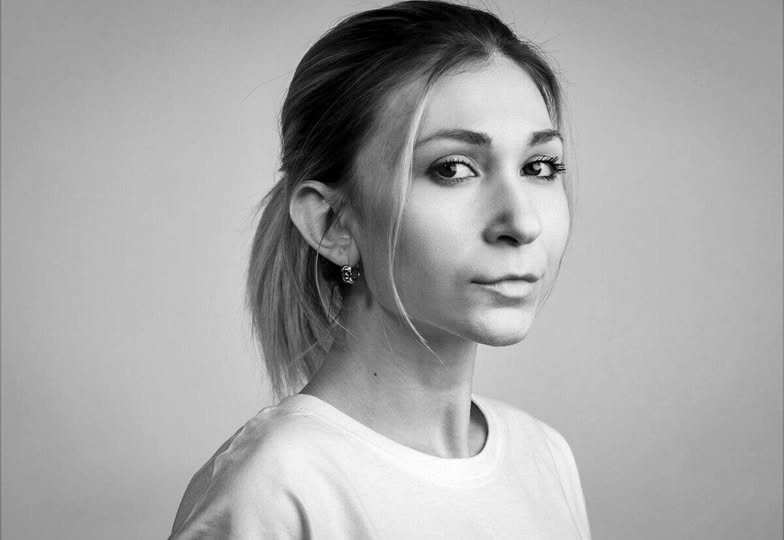
The most notorious torture site is Detention Center No. 2 in Taganrog (175 Lenin Street). It has held a massive number of both civilian and military prisoners. Ukrainian journalist Victoria Roshchyna was detained there, and likely died in that very facility. She was abducted in occupied territory in 2023, and by September 2024 news emerged of her death in captivity. In April 2025, Russia returned her body to Ukraine — without eyes, brain, and a part of her larynx, bearing signs of torture and extreme emaciation.
Another horrific facility is Detention Center No. 2 in Simferopol (4 Elevatorny Lane). Located on the grounds of Penal Colony No. 1, it was opened in the first weeks of the full-scale invasion. This is where “incommunicado” detainees are held. Officially, Penal Colony No. 1 and the newly opened Detention Center No. 8 (launched in October 2022) are located at the same address.
One of the most brutal sites is also Penal Colony No. 7 in the village of Pakino, Vladimir Region (1A Tsentralnaya Street). Journalists from the Viktoriia Project, dedicated to the memory of Victoria Roshchyna, have collected extensive evidence of torture there. As of autumn 2024, at least two prisoners had died from abuse at Pakino. Just like in many other places of detention, prisoners were beaten during “intake,” forced to sing Russian songs, and made to invent crimes they had never committed. Local guards there became known for mock executions using blanks and for forbidding prisoners from sitting or lying down during the day.
What fate awaits the “incommunicado” prisoners? The case of Oleksandr Tarasov — who was rescued due to international attention — is a rare exception. The System rarely lets go of its captives.
“Incommunicado” prisoners are usually not eligible for exchanges: since they don’t officially exist, they don’t appear on any lists. However, during interrogations and torture sessions, FSB officers may gather enough “material” to open a criminal case at any moment. This is why some people disappear in, say, September — and only appear in official FSIN records the following March.
And the third possible outcome for a prisoner in this System of terror is death.
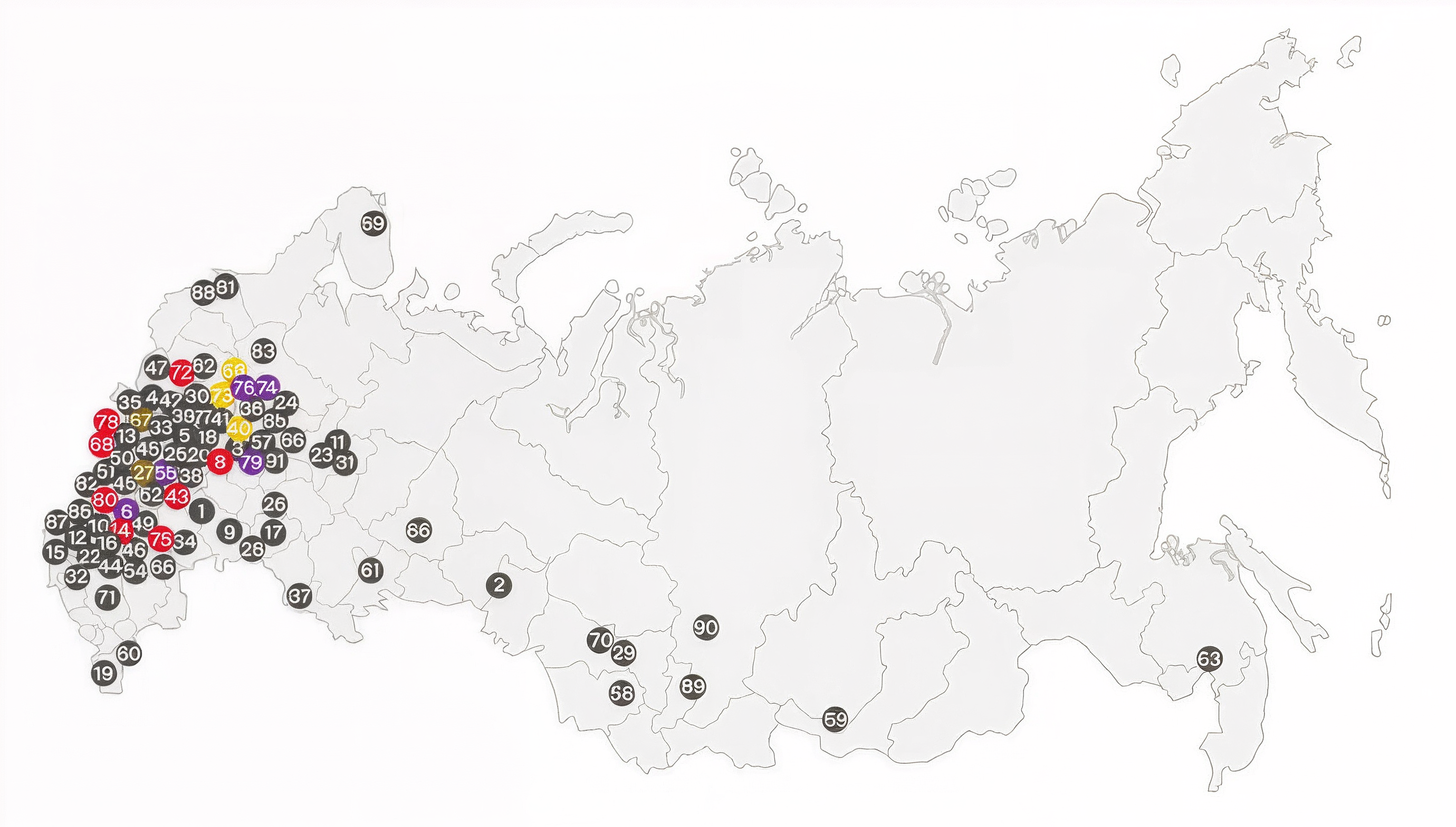
6. Map of Terror
As of April 2025, Ukrainian human rights defenders had identified more than 180 locations where abducted Ukrainians are being held. The geography of these prisons is vast — as if the Kremlin is deliberately scattering prisoners across the widest possible area.
One possible explanation is that the Russian prison system was simply unprepared for the influx of Ukrainian detainees. A few years before the full-scale invasion, in 2018, Russia launched a large-scale program to reconstruct and build new detention facilities — at a cost of 55 billion rubles. But in 2022, just two months after the invasion began, the program’s cost projections were revised: the budget nearly doubled to 102 billion rubles. Our estimates show that the capacity of pre-trial detention centers also almost doubled — from approximately 10 000 to 20 000.
Under the 2018 program, yet another detention center was supposed to be built in occupied Simferopol, in addition to those described by Oleksandr. It was designed to hold 1 500 prisoners. However, the construction collapsed amid a corruption scandal: a former deputy director of the Federal Penitentiary Service (FSIN) was sentenced to 16 years in prison for embezzling funds from the unfinished facility.
In 2025, journalists from CEPA uncovered three draft laws submitted to the Russian State Duma. These bills propose creating a new network of prisons and pre-trial detention centers that would operate under the FSB, not FSIN. In other words, the FSB wants to establish its own prison system, independent of the federal penitentiary service, complete with a separate transport system for prisoners — including special railcars, aircrafts, and ships.
Currently, all detention centers and prisons where Ukrainian civilian prisoners are held unofficially are already under FSB control. But the new system would legalize this arrangement. As of early July 2025, the draft law has passed its first reading in the State Duma, according to The Moscow Times.
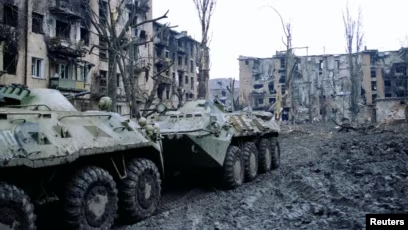
7. The System Repeats Itself
In 2024, human rights defender and historian Oleg Orlov, together with the Memorial team, published a major study of three Russian wars: in Chechnya, Syria, and Ukraine. The study demonstrates how the Russian machinery of repression recycles the same tactics again and again across different regions.
The report arrives at a clear, troubling, and systemic conclusion: Russia’s armed forces and security services have, for decades, reproduced the same practices of war crimes and human rights violations across different conflicts. These are not isolated abuses — they are part of a deliberate and entrenched system, where mass violations become the default mode of warfare. The driving force behind this system is impunity and lawlessness.
In Chechnya alone, Orlov says, at least 3 000 civilians were abducted by Russian security forces. All of them were later killed, often in horrifying ways.
The authors emphasize that Russia’s chain of wars since the 1990s is not a sequence of isolated conflicts, but a logically connected process, where each new war inherits the methods of the previous one. The same military units, the same commanders, the same approaches to “cleansing,” filtering, and terrorizing civilian populations. Their experience — and their crimes — are not investigated, but often rewarded.
This has created a closed cycle: Crime → Silence → Reward → New Crime.
Thus emerges a chain of wars, a chain of crimes, a chain of impunity. Without breaking this system — through public recognition, independent investigations, and international justice — the reproduction of violence will continue.
Without memory and accountability, there can be no peace:
“The impunity of the murderers of Samashki gave rise to Bucha. Without justice for the destroyers of Grozny, there can be no justice for Mariupol.”
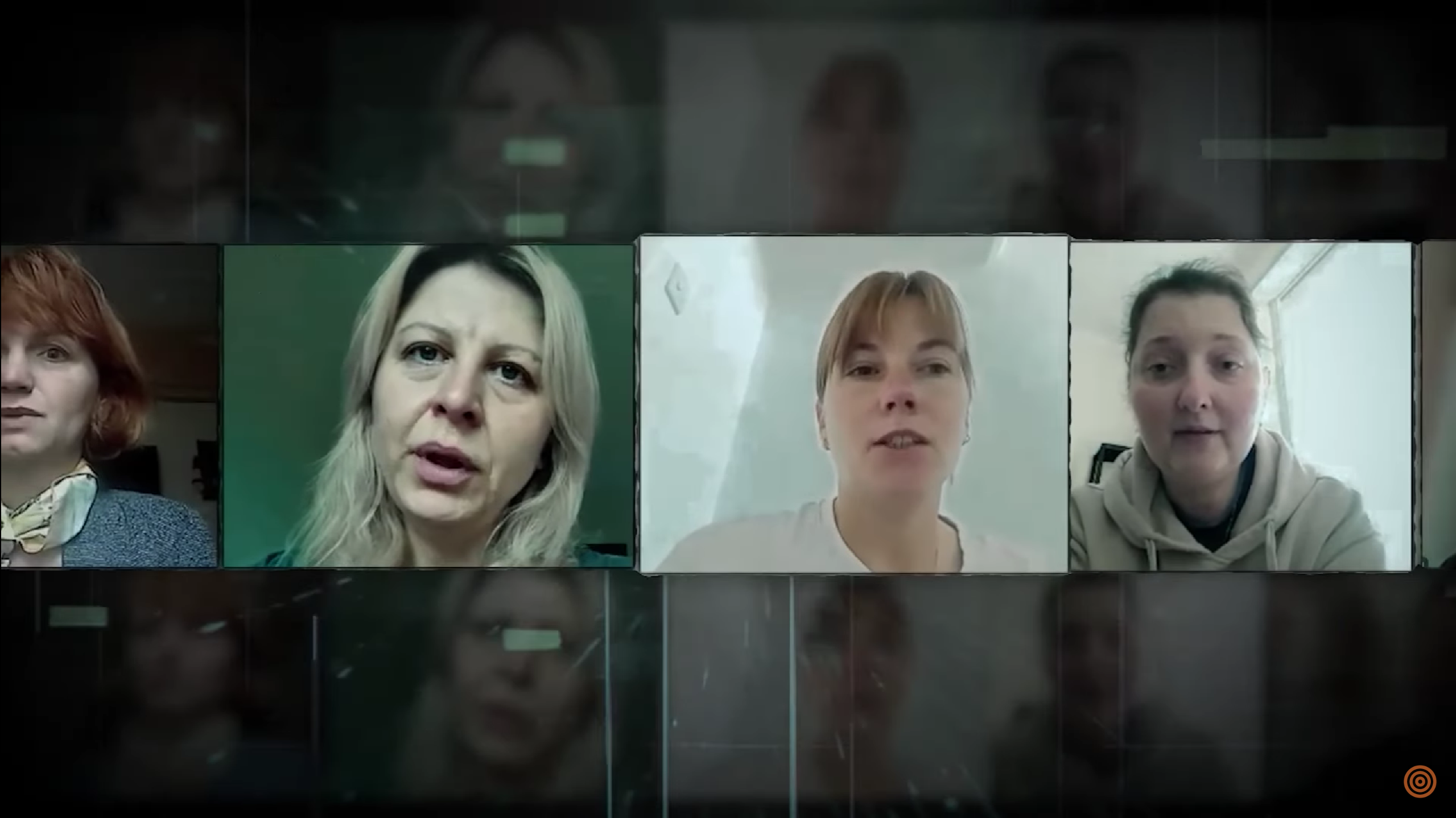
8. Silence Is a Part of the System of Terror
The people caught in the System die from torture, agony, and helplessness.
Right now, the only ones fighting for Ukrainian civilian prisoners are their families, and sometimes human rights defenders. Often, they’re just ordinary people, encountering this horror for the first time. They don’t know where to turn or what to do.
While negotiations are underway about front lines, politics, and the terms of a deal, human lives fall out of the equation.
If the war ends “along the contact line” — what happens to the prisoners?
Who will free them? Who will even remember them?
Most likely, they’ll remain exactly where they are now: in basements and prisons, without light or contact, suspended from ceilings, wrapped in wires. That’s their death sentence.
We refuse to accept silence. Because silence helps the System.
